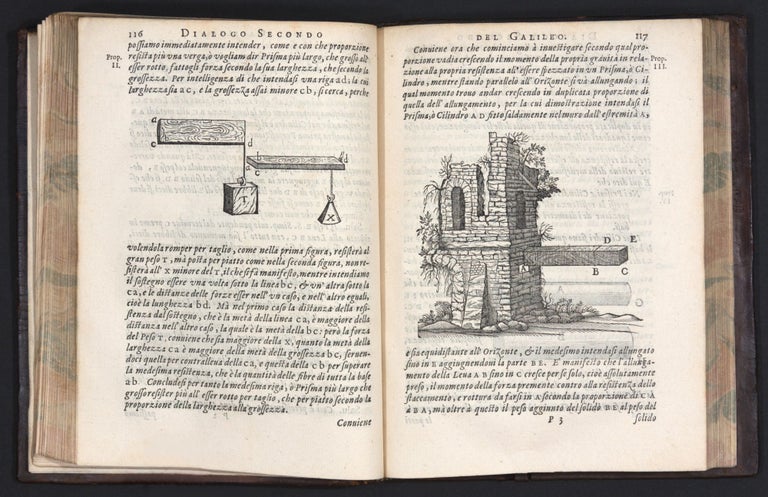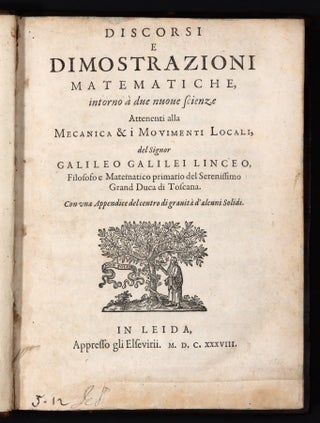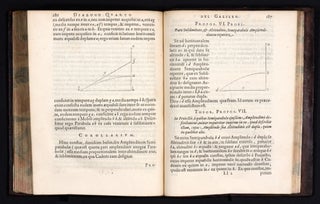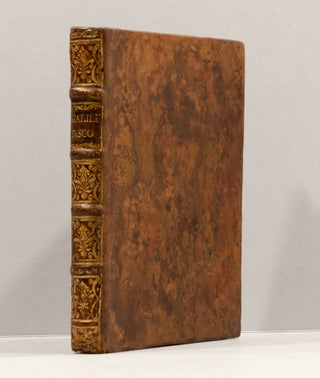Discorsi e Dimostrazioni Matematiche, intorno à due nuove scienze Attenenti all mechanica & i movimenti locali... con une appendice del centro di gravita à d’alcuni solidi.
4to [18.9 x 14.1 cm], (4) ff., 306 [i.e. 314] pp, (3) ff., with numerous woodcut diagrams and illustrations in text. Bound in contemporary mottled calf, gold-tooled spine, gold-tooled board edges, marbled endpapers, marbled edges, green silk ribbon bookmark. Minor rubbing and edge wear to spine and boards, restoration at lower edge of title. Rare first edition of Galileo’s final work, a text renowned as the first systematic attempt to give a mathematical treatment of kinematics and considered by most contemporary historians of the period “his greatest scientific achievement … Mathematicians and physicists of the later seventeenth century, Isaac Newton among them, rightly supposed that Galileo had begun a new era in the science of mechanics. It was upon his foundation that Huygens, Newton and others were able to erect the frame of the science of dynamics, and to extend its range (with the concept of universal gravitation) to the heavenly bodies” (Printing and the Mind of Man, p. 130). The Discorsi e Dimostrazioni Matematiche is a foundational work, “not only because it contains the elements of the mathematical treatment of motion, but also because most of the problems that came rather quickly to be seen as problems amenable to physical experiment and mathematical analysis were gathered together in this book with suggestive discussions of their possible solution” (S. Drake in DSB). “Unable to publish this treatise on mechanics in his own country because of the ban placed on his books by the Inquisition, he [Galileo] published it in Leyden. Considered the first modern textbook in physics, in it Galileo pressed forward the experimental and mathematical methods in the analysis of problems in mechanics and dynamics. The Aristotelian concept of motion was replaced by a new one of inertia and general principles were sought and found in the motion of falling bodies, projectiles and in the pendulum. He rolled balls down an inclined plane and thereby verified their uniformly accelerated motion, acquiring equal increments of velocity in equal increments of time. The concept of mass was implied by Galileo’s conviction that in a vacuum all bodies would fall with the same acceleration. Newton said he obtained the first two laws of motion from this book” (Dibner, p. 141). * Carli-Favaro 162; Cinti 102; Willems 468; Dibner, Heralds of Science, 141; Evans, Epochal Achievements, 27; Horblit, One Hundred Books, 36; Norman 859; Parkinson, pp. 80-81; Printing and the Mind of Man, 130; Sparrow, Milestones, 75.
Sold





